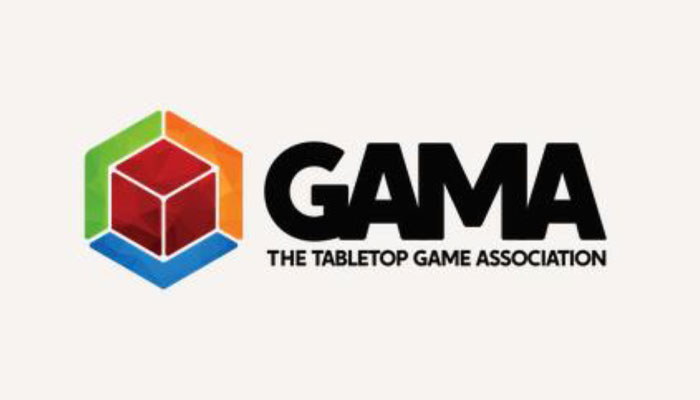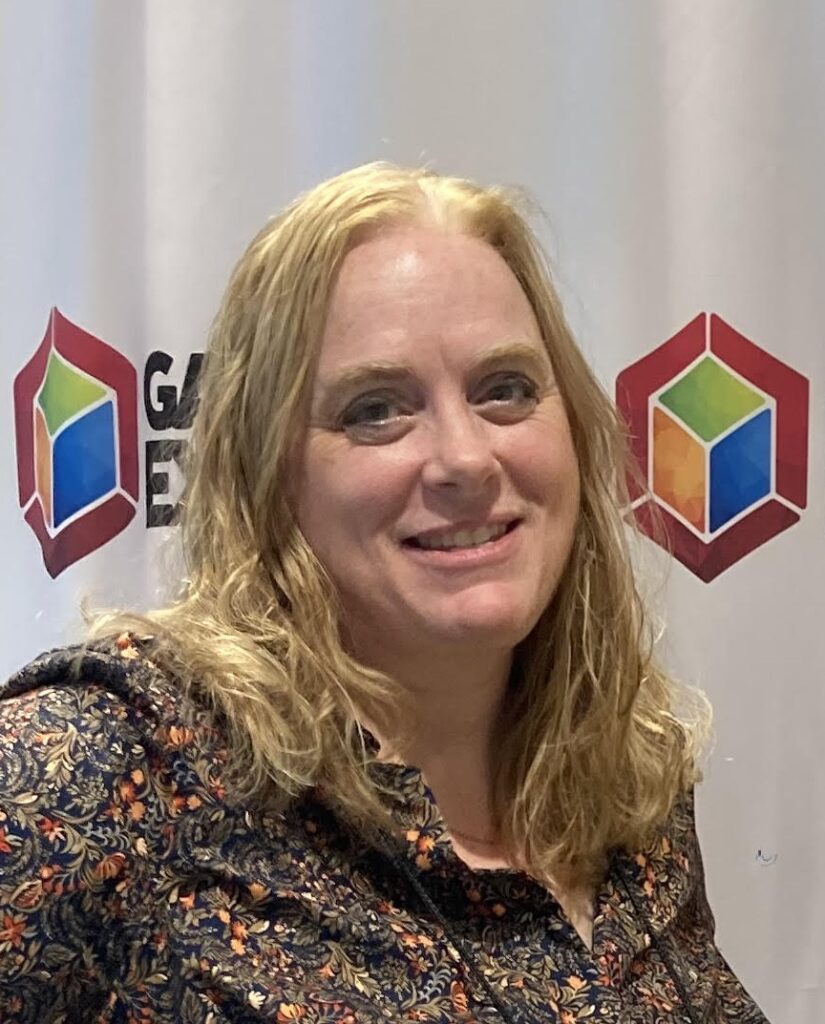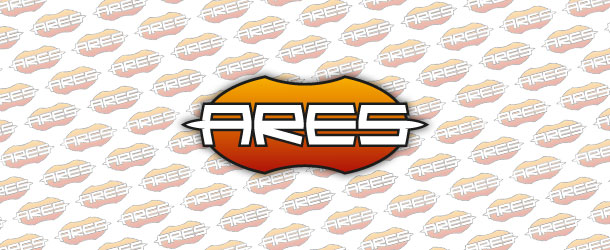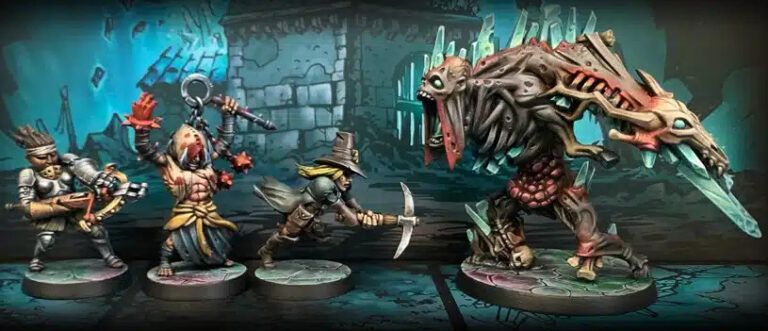
GAMA unveils 10-year plan to become “epicenter” of global tabletop gaming industry, renames itself after almost 50 years
Hobby games trade organisation GAMA has set its sights on becoming the “epicentre” of global tabletop gaming in the unveiling of its first-ever 10-year plan – which comes alongside the association renaming itself for the first time in its almost 50-year history.
US-based GAMA has revealed an array of plans spread across the next decade, including boosting its membership within both hobby games and the mass market, expanding itself into a global organisation, shifting its finances away from the current heavy reliance on the annual GAMA Expo and Origins shows, and leading the conversation on sustainability within the industry.
Advocacy and brand protection is also one of its near-term priorities – underscored by the organisation’s recent intensive lobbying and awareness efforts around the impact on the industry of US tariffs.
Those efforts have included multiple trips to Washington DC to lobby politicians, conducting dozens of media interviews to highlight the devastating impact of tariffs on the hobby, and supporting two lawsuits disputing Trump’s power to set the tariffs without agreement from the US Congress.
The inaugural 10-year plan has been spearheaded by current GAMA president Nicole Brady, who told BoardGameWire earlier this year that the move was an attempt to get the organisation away from “playing whack-a-mole” on important issues rather than managing them in a long-term strategy.

Brady said the organisation’s fall planning session last year saw the board draw up a list of ambitious, “pie in the sky” ideas about where they would like to see GAMA in a decade, before giving GAMA executive director John Stacy the autonomy to figure out how those plans could be achieved.
Speaking as the plans were unveiled at an online GAMA “town hall” meeting on September 18, Brady said, “Ultimately in ten years we would like to be seen as the epicenter for tabletop gaming, on both a hobby level and a mass level. And we want to be a global organization.
“…I do know from having conversations with some people on the toy industry association side that there are a lot of people that have been a little disheartened with how things have been approached from an advocacy perspective, so we have been having a lot more questions coming to us.
“But even before that the goal was to move out of the idea of it being hobby, the same people that you see inside the walls of Gen Con or Origins, and move on to a more mass level where we’re reaching more people.”
That push to bring more mass-market companies into GAMA continues the recent rapid expansion to the organisation’s decades-long remit of representing hobby game publishers, retailers and wholesalers.
GAMA has made a big push in recent years to better represent other professionals from across the modern tabletop industry, including designers, manufacturers, media, events organisers and third-party service providers – something which will be reflected in its new name.
The organisation – which will still be legally named The Game Manufacturers Association – has rebranded to GAMA: The Tabletop Game Association, something it said “reinforces GAMA’s commitment to inclusiveness, relevance, and leadership in the tabletop space”.
A statement from the trade association said, “The tabletop game industry has grown far beyond where we were in 1977 when we were founded. Our new name honors that evolution while maintaining our legacy of nearly 50 years of serving the tabletop industry.
It added, “We’re excited to move forward under a banner that celebrates the full spectrum of our industry and the people who shape it.”
That banner will increasingly include members from outside the US under GAMA’s new plan, with global expansion part of its second phase of priorities for between 2028 and 2030.
Such international expansion hopes are not new for the organisation. Brady’s predecessor as GAMA president, Eric Price, said in 2023 that he was focused on growing the organisation’s membership and adding more international connections, starting with European members and organizations.
At that time about 90% of GAMA’s membership hailed from the US, with just 5% coming from Canada and 5% from the rest of the world.
GAMA executive director John Stacy told the 10-year plan town hall meeting, “We are primarily a US-based organisation. But we have members in 36 countries, and so we need to be mindful that we have to serve them as well.

“And so we want to have a global mindset, not… hey, we’re a US company trying to support the world. No, we want to make sure that we’re supporting the entire hobby and the higher industry.”
GAMA’s near term priorities over the next two years also include an anti-counterfeit initiative, its newly-launched Game Store Day, education and certification programmes, providing professional resources, and generally being an industry voice and reaching out to media about topics important to the business.
The organisation said it also hopes to do more in promoting tabletop as a career choice, offer career development and education, and expand its current industry awards programme.
In terms of financing the organisation, Stacy said, “We learned very heavily during Covid that when we shut down and there were no events, we’re very heavily dependent upon Origins and [GAMA Expo] for our financial strength.
“So we’re trying to figure out as a board how we are more resilient and how we’re more flexible, looking for a broader mix of revenues – whether it’s through programme fees, or growing membership, some targeted marketing initiatives.”
He added, “We need to have more balance to make sure we have long-term sustainability of the organization itself.”
GAMA recently brought in its first-ever chief operating officer to help manage its growing staff numbers, naming Melinda Prickett to handle day-to-day operations at the organisation.
Earlier this year GAMA revealed its flagship trade show GAMA Expo would be moving to Baltimore, after surging attendance numbers left the event straining at the seams again – just two years after the show shifted to Kentucky to handle growing interest.
The organisation also runs the consumer-focused Origins Game Fair each June, which this year drew ever closer to recovering its attendance figures to their pre-pandemic highs.
More than 19,100 people attended this year’s Origins, up 8% on 2024 and closing on the 20,600 recorded in 2019.
Stacy said during the town hall meeting that GAMA would like to see Origins reach about 35,000 attendees over the next five years, while running between 8,000 and 10,000 events at each show.
He added, “Obviously we want to make sure it’s a showcase for members to showcase the games to consumers.
“And so we want to have a greater number of game publisher members attend, showcase their games, and make them available for consumers to buy – because ultimately we are a trade association, and that needs to be one of our main responsibilities.”






[…] decision to leave GAMA for an unnamed trade association in the medical field comes just a couple of weeks after the organisation revealed its first-ever 10-year plan, which GAMA president Nicole Brady told BoardGameWire was part of an attempt to get the […]
[…] to become “epicenter” of global tabletop gaming industry, renames itself after almost 50 years. https://boardgamewire.com/index.php/2025/10/02/gama-unveils-10-year-plan-to-become-epicenter-of-glob…. GAMA’s 10-year plan to expand its range and support over the next […]
[…] GAMA’s former executive director John Stacy left last month after overseeing what the organisation described as seven “transformative” years – with the news his contract would not be renewed coming just three weeks after GAMA unveiled ambitious plans to become the “epicenter” of the global tab…. […]